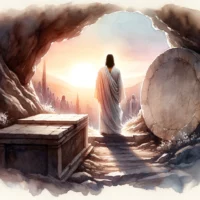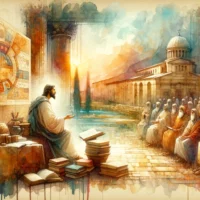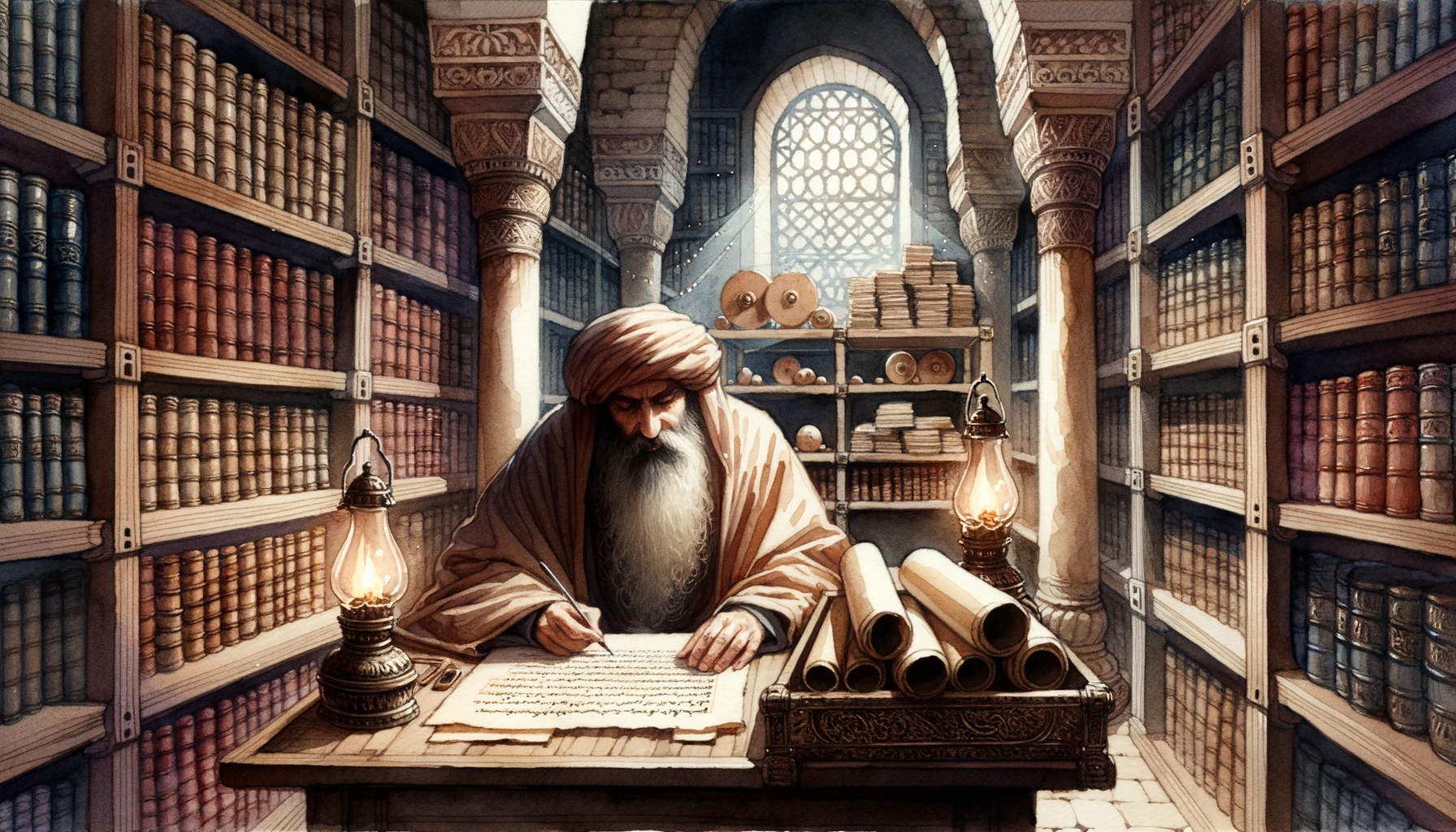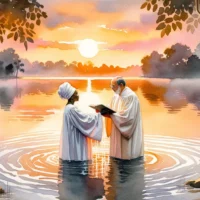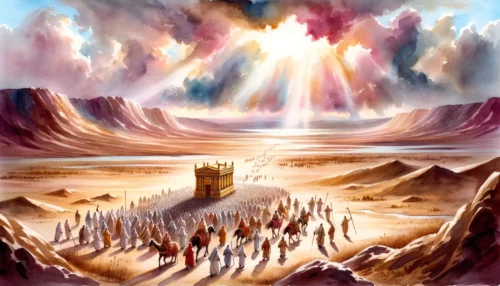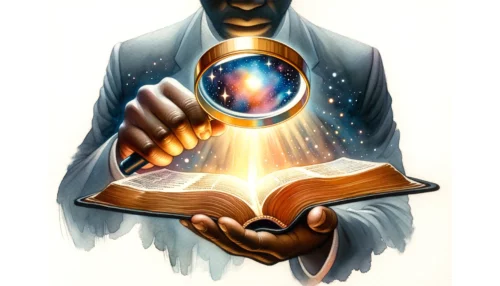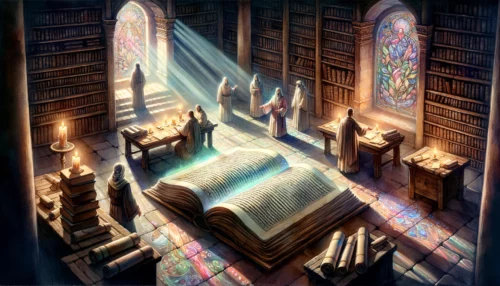The Bible, revered as the sacred text of Christianity, contains a multitude of stories, prophecies, and teachings that have guided believers for centuries. But who were the people responsible for penning these sacred texts? This article will explore the divine inspiration behind the Bible and identify the human authors who contributed to its formation. By understanding the origins of the Bible, we can better appreciate its significance and its role in shaping the Christian faith.
The Divine Inspiration of the Bible
Central to the Christian belief is the idea that the Bible is not merely a human creation, but a divinely inspired work. This means that the words, stories, and teachings within the Bible are believed to have come from God through the Holy Spirit, who guided the human authors in their writing (2 Timothy 3:16-17). By inspiring the authors, God ensured that His message would be accurately and effectively communicated to His people.
While the Bible was written by human authors, their words were influenced by the Holy Spirit, which is often described as the “breath of God.” This divine inspiration allowed the authors to convey God’s wisdom, will, and teachings to the generations of believers who would come after them (2 Peter 1:20-21). Consequently, the Bible is considered the infallible and authoritative Word of God for Christians.
In the process of divine inspiration, God did not override the individuality, personality, or writing styles of the human authors. Instead, He worked through their unique perspectives and experiences, allowing them to express His message in their own voices. This collaboration between the divine and the human is what makes the Bible such a rich and varied text, featuring a diverse range of literary styles and genres.
It is important to note that the Bible is not a single book but a collection of books, written by various authors over a period of approximately 1,500 years. The Bible is divided into two main sections: the Old Testament, which comprises the sacred scriptures of Judaism, and the New Testament, which contains the writings of the early Christian church. Despite the diversity of authors and time periods, the Bible maintains a remarkable unity of message, centered on God’s love, redemption, and relationship with His people.
The Bible is a unique and sacred text for Christians, believed to have been divinely inspired by the Holy Spirit, who guided the human authors in their writing. This divine inspiration ensured that the Bible would accurately convey God’s message, while still reflecting the individual voices and experiences of its human authors. As a result, the Bible stands as a testament to the enduring relationship between God and His people, offering guidance, wisdom, and hope for generations of believers.
The Human Authors of the Old Testament
The Old Testament, also known as the Hebrew Bible, is a collection of sacred texts that were written over a period of approximately 1,000 years, from the time of Moses in the 15th century BC to the time of Malachi in the 5th century BC. The Old Testament is composed of various literary styles, including history, poetry, prophecy, and wisdom literature. It contains 39 books, which are traditionally divided into five sections: the Pentateuch, the Historical Books, the Wisdom Books, the Major Prophets, and the Minor Prophets.
The Pentateuch, also called the Torah, is the first five books of the Old Testament: Genesis, Exodus, Leviticus, Numbers, and Deuteronomy. These books are traditionally attributed to Moses, who is believed to have received the Ten Commandments from God on Mount Sinai (Exodus 19-20). While there is scholarly debate about the authorship of the Pentateuch, the belief in Moses as the primary author has been a long-standing tradition in both Judaism and Christianity.
The Historical Books include Joshua, Judges, Ruth, 1 and 2 Samuel, 1 and 2 Kings, 1 and 2 Chronicles, Ezra, Nehemiah, and Esther. These books narrate the history of the Israelites, from their conquest of the Promised Land under Joshua to their return from exile in Babylon. Many of these books are anonymous, but some are traditionally attributed to specific authors, such as Samuel being the author of 1 Samuel and Ezra being the author of Ezra and Nehemiah.
The Wisdom Books consist of Job, Psalms, Proverbs, Ecclesiastes, and the Song of Solomon. These books primarily contain poetry, prayers, and teachings about wisdom, morality, and the meaning of life. King David is traditionally considered the primary author of Psalms, although other contributors are also believed to have written some of the psalms (Psalm 90 is attributed to Moses, for example). King Solomon is credited with writing Proverbs, Ecclesiastes, and the Song of Solomon, although some scholars debate the extent of his authorship.
The Major Prophets include Isaiah, Jeremiah, Lamentations, Ezekiel, and Daniel, while the Minor Prophets comprise twelve shorter prophetic books from Hosea to Malachi. These books contain the writings and prophecies of individuals who were called by God to deliver His messages to the people of Israel. The books are typically named after their respective authors or central figures, such as Isaiah, Jeremiah, and Ezekiel.
The Old Testament is a collection of divinely inspired texts written by various authors over a period of about 1,000 years. Although some of the authorship remains debated or anonymous, many books are attributed to specific authors, such as Moses, David, Solomon, and the various prophets. The Old Testament provides a foundation for the Christian faith, recounting the history of God’s relationship with His chosen people and revealing His character, promises, and purpose for humanity.
The Human Authors of the New Testament
The New Testament, written primarily in the first century AD, consists of 27 books that are foundational to the Christian faith. These books record the life, teachings, death, and resurrection of Jesus Christ, as well as the early history of the Christian church and the teachings of the apostles. The New Testament can be divided into four main sections: the Gospels, the Acts of the Apostles, the Epistles, and the book of Revelation.
The Gospels are four books—Matthew, Mark, Luke, and John—that provide distinct accounts of Jesus’ life, ministry, and teachings. The authors of these books are traditionally identified as Matthew, a tax collector and one of Jesus’ twelve apostles; Mark, a close associate of the apostle Peter; Luke, a physician and companion of the apostle Paul; and John, one of Jesus’ closest apostles (John 21:24). Each Gospel presents a unique perspective on Jesus’ life and teachings, offering a more comprehensive understanding of His mission and message.
The Acts of the Apostles, commonly referred to as Acts, is a historical account of the early Christian church, written by Luke, the same author as the Gospel of Luke (Luke 1:1-4; Acts 1:1-2). The book of Acts details the events that occurred after Jesus’ resurrection, including the descent of the Holy Spirit at Pentecost, the growth of the church, and the missionary journeys of the apostle Paul.
The Epistles are a collection of letters written by various authors to address specific issues, provide encouragement, and give instruction to early Christian communities. The apostle Paul is the author of 13 of the 21 Epistles, including Romans, 1 and 2 Corinthians, Galatians, Ephesians, Philippians, Colossians, 1 and 2 Thessalonians, 1 and 2 Timothy, Titus, and Philemon. Other authors of the Epistles include James, the brother of Jesus; Peter, one of Jesus’ apostles; John, the author of the Gospel of John; and Jude, another brother of Jesus. The authorship of the Epistle to the Hebrews remains uncertain, although some early Christian traditions attribute it to Paul.
The final book of the New Testament, the book of Revelation, is a prophetic work written by John, the same author as the Gospel of John and the Epistles of John (Revelation 1:1, 1:4, 1:9, 22:8). The book of Revelation contains a series of visions and prophecies concerning the end times, offering hope and encouragement to believers as they anticipate the fulfillment of God’s promises.
The New Testament is a collection of divinely inspired texts written by various authors in the first century AD, including the apostles and their close associates. These writings provide a detailed account of Jesus’ life, teachings, and resurrection, as well as the early history of the Christian church and the teachings of the apostles. Together with the Old Testament, the New Testament forms the complete canon of the Christian Bible, revealing God’s plan for salvation through Jesus Christ and guiding believers in their faith and practice.
Revelations of Divine Authorship
The journey through the origins of the Bible offers a profound understanding of the divine inspiration and human authorship that shape this sacred text. As you reflect on the remarkable story behind the Bible, consider these questions:
- How does knowing the authors and the historical context of the Bible influence your understanding of its message?
- In what ways does the collaboration between the divine and human authors enrich your appreciation of the Bible’s teachings?
- How can you apply the wisdom and insights from the Bible to your personal faith journey?
In the words and stories of the Bible, we find a testament to the enduring love, guidance, and hope offered by God to His people. By appreciating the divine inspiration and human authors behind this sacred text, we can draw closer to the heart of God and grow in our understanding of His purpose for our lives. May your exploration of the Bible inspire you to deepen your faith and nurture your relationship with the Creator.
